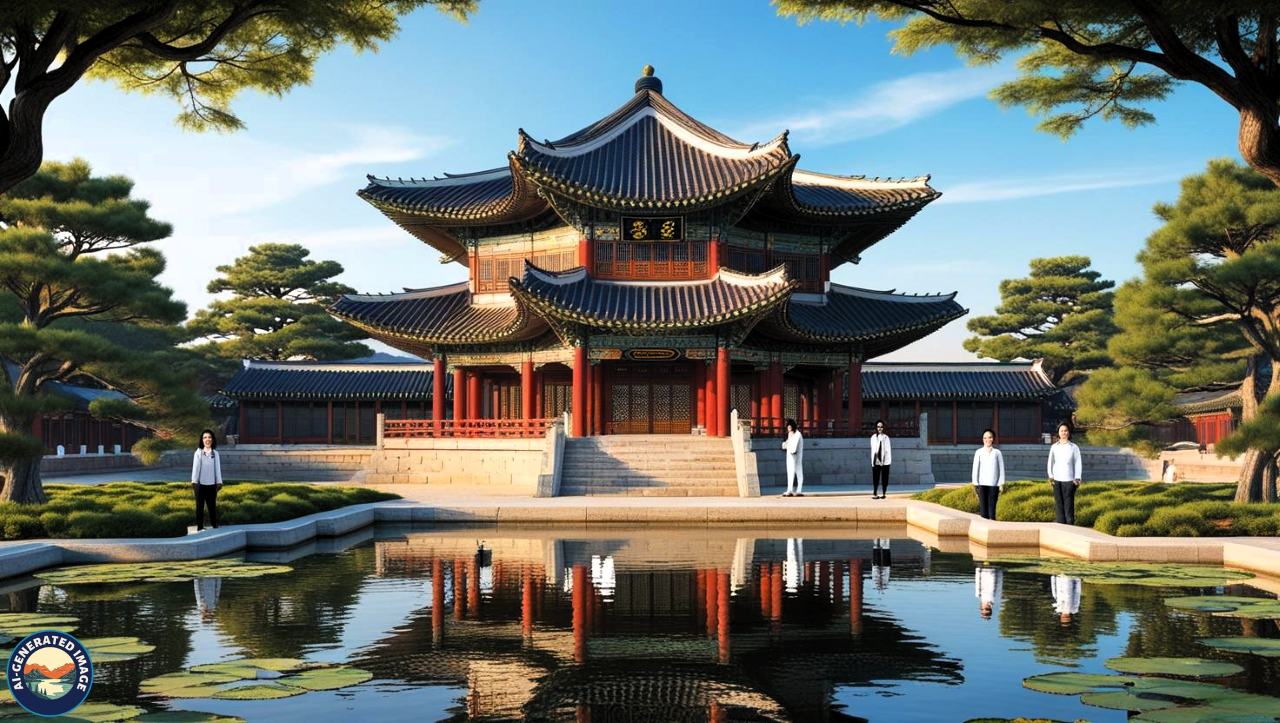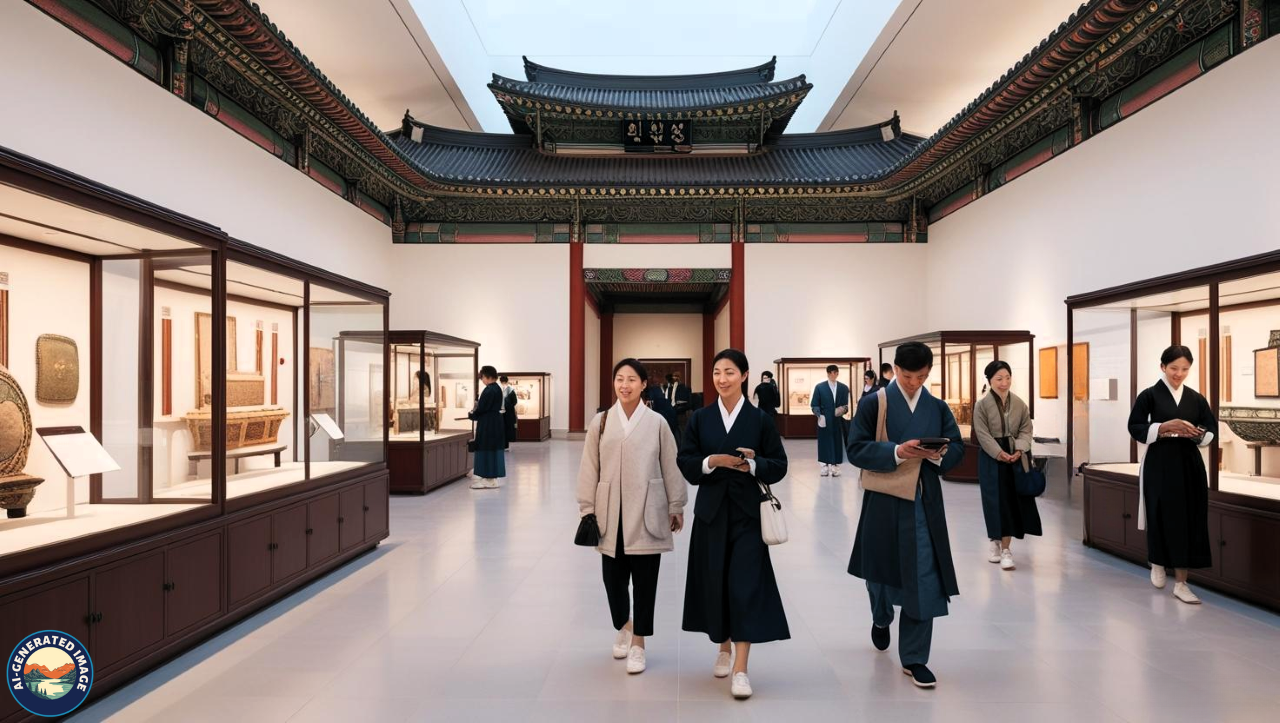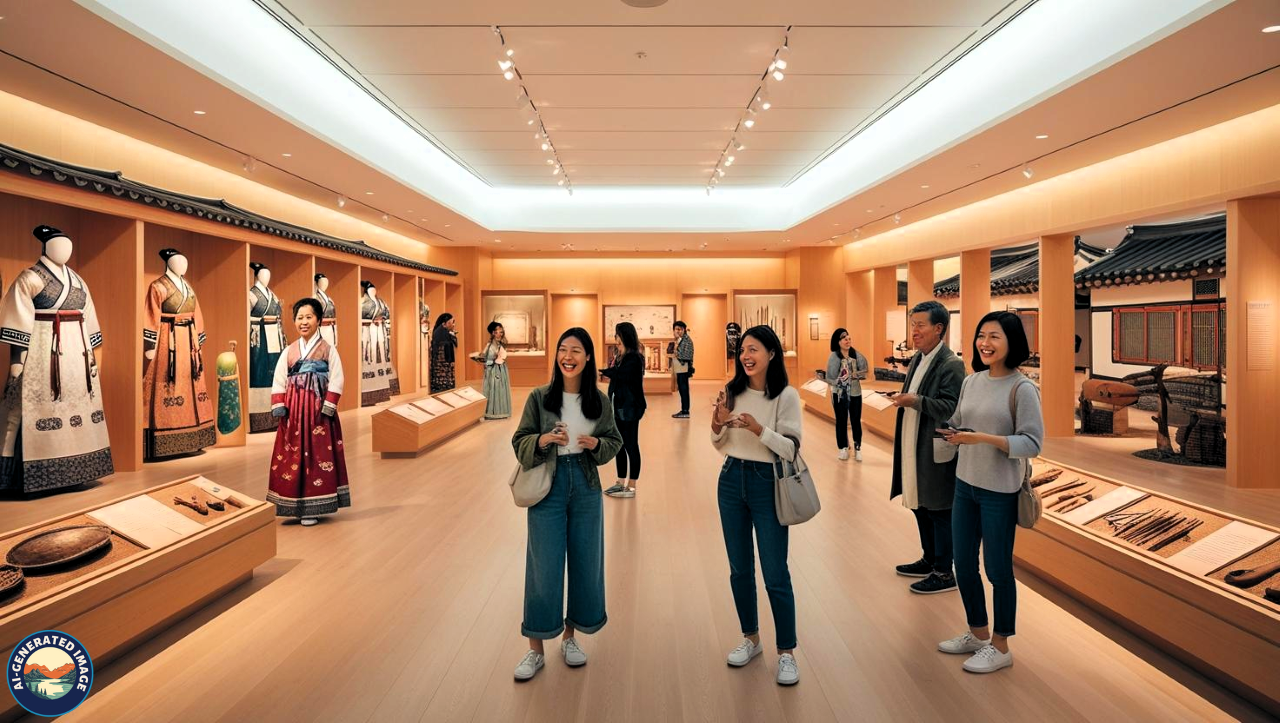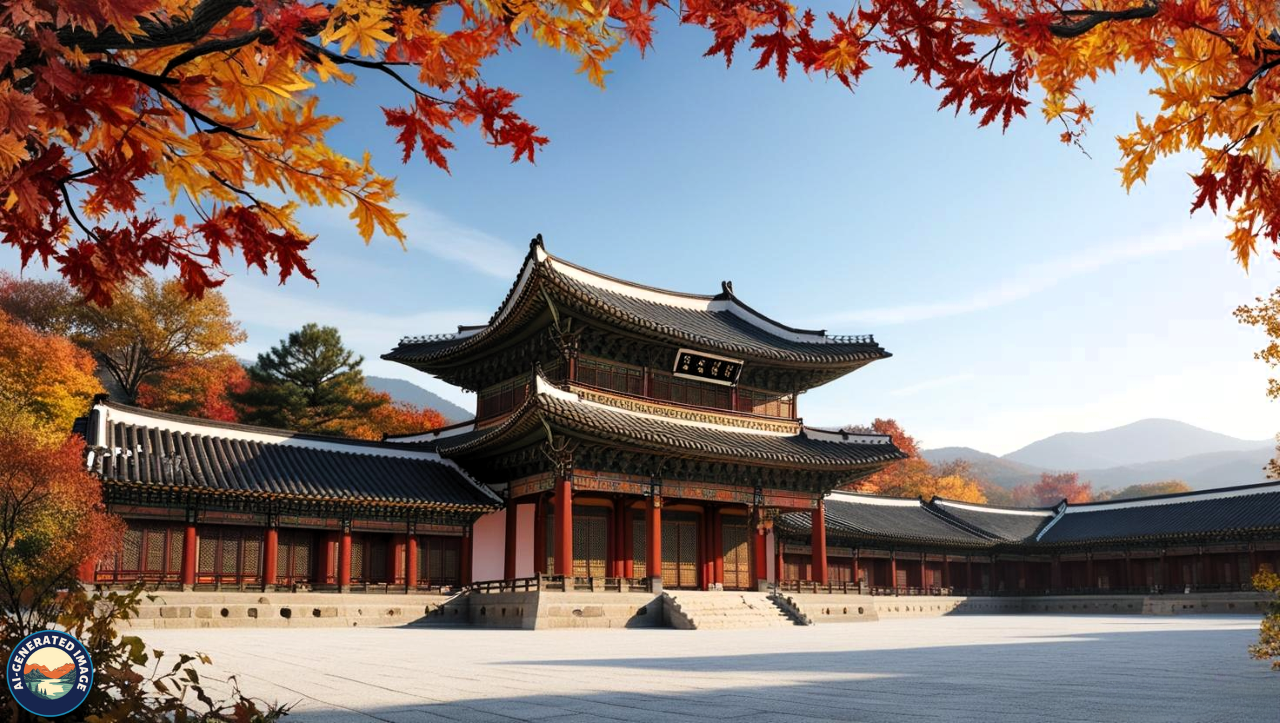Introduction
Amid Seoul’s modern skyline lies a timeless treasure from Korea’s regal past—Gyeongbokgung Palace. More than just an architectural marvel, this palace is a vibrant symbol of the nation’s royal history and cultural identity. Built during the early Joseon Dynasty, Gyeongbokgung served as Korea’s political, administrative, and ceremonial heart.
Through centuries of glory, war, destruction, and revival, the palace has endured as a proud emblem of Korean resilience. Today, it offers visitors a unique opportunity to step back in time and experience the grandeur of a bygone era. With its expansive grounds, intricate architecture, and immersive cultural experiences, Gyeongbokgung is a must-visit for anyone traveling to South Korea.
Historical Background
Gyeongbokgung, which translates to “Palace Greatly Blessed by Heaven,” was constructed in 1395 by King Taejo, the founder of the Joseon Dynasty. Nestled with Bugaksan Mountain at its back and facing southward, its location was carefully chosen based on traditional Korean geomancy (pungsu-jiri), believed to bring harmony and prosperity.
As the primary royal residence, the palace played a central role in state affairs and royal life. However, its history is marked by turmoil. During the Imjin War in the late 1500s, the palace was destroyed by fire and left in ruins for over two centuries.
Restoration began in the 19th century under King Gojong, reviving the palace’s former glory. Sadly, much of it was once again dismantled during Japanese colonial rule in the early 20th century. Since then, the South Korean government has embarked on continuous efforts to restore Gyeongbokgung to its original splendor, making it one of Asia’s most remarkable historical reconstructions.
Architectural Highlights of Gyeongbokgung
Gyeongbokgung is a masterpiece of Joseon Dynasty architecture, characterized by harmony with nature, symmetrical design, and symbolic meaning. Originally, the palace complex included nearly 400 buildings, each serving specific functions for governance, ritual, or royal living.
Geunjeongjeon Hall (Throne Hall)
This grand hall was the heart of royal ceremonies. It was where the king received high officials, conducted state affairs, and held formal gatherings. Elevated on a two-tiered stone platform, its imposing pillars and vividly painted dancheong (traditional decorative coloring) emphasize the majesty of the monarchy.

Gyeonghoeru Pavilion
Located on an artificial island in a lotus pond, Gyeonghoeru was used for royal banquets and diplomatic events. Supported by 48 granite columns, the pavilion’s reflection on the still water creates a stunning visual, especially in the spring and autumn.

Hyangwonjeong Pavilion
This hexagonal pavilion, built as a private retreat, sits on a small island connected by a graceful wooden bridge. It offers a serene atmosphere, ideal for reflection amidst nature’s beauty.

Living Quarters: Gangnyeongjeon and Gyotaejeon
Gangnyeongjeon served as the king’s residence, while Gyotaejeon was designated for the queen. Notably, Gyotaejeon features the exquisite Amisan Garden, known for its ornamental chimneys and refined landscaping.

The palace is enclosed by high stone walls and accessed through monumental gates, the most famous being Gwanghwamun Gate, the palace’s main entrance, and an iconic landmark in Seoul.
Cultural Activities and Traditions
Gyeongbokgung is more than a historic site—it’s a living cultural hub where Korea’s traditions are celebrated and shared with the public.
One of the most popular attractions is the Changing of the Guard Ceremony at Gwanghwamun Gate. Reenacted in vibrant traditional uniforms with meticulous attention to historical accuracy, this ceremony offers a glimpse into the palace’s past security rituals.
Visitors can also immerse themselves by renting a hanbok, Korea’s traditional clothing. Wearing a hanbok not only enhances the experience but also grants free entry to the palace. It’s a popular activity among both tourists and locals.
Throughout the year, the palace hosts various cultural performances, including traditional court music, dances, and seasonal festivals, bringing Joseon-era customs to life engagingly and educationally.
Gyeongbokgung’s Museums and Exhibitions
Located within the palace grounds are two prominent museums that offer deeper insights into Korean culture and history:
National Palace Museum of Korea
This museum houses an impressive collection of royal artifacts, including ceremonial garments, scientific instruments, and ornate furnishings from the Joseon court. Detailed exhibits showcase the elegance and sophistication of royal life.

National Folk Museum of Korea
Focusing on everyday Korean life through the ages, this museum presents traditional housing, tools, festivals, and social customs. It’s an excellent complement to the palace visit, illustrating the lives of common people alongside royal grandeur.

Both museums are free to visit and offer educational displays suitable for all ages, with interactive elements and multilingual information.
Best Seasons to Experience Gyeongbokgung
The beauty of Gyeongbokgung shifts with the seasons, offering different charms throughout the year:
-
Spring:
-
Cherry blossoms and fresh blooms fill the gardens, creating a soft and romantic backdrop.
-
Summer:
-
Vibrant greenery and blooming lotus flowers make the palace feel alive, though the heat can be intense.
-
Autumn:
-
Brilliant shades of red, orange, and yellow add warmth and depth to the palace’s colors.
-
Winter:
-
Snow blankets the rooftops and grounds, transforming the palace into a serene, monochromatic wonderland.
For the best experience, consider visiting early in the morning or on weekday afternoons to avoid crowds. Special night tours, occasionally available, offer a magical view of the palace illuminated against the dark sky.
Visitor Essentials and Logistics
Address:
Gyeongbokgung Palace, Jongno-gu, Seoul, South Korea
How to Get There:
-
By Subway:
-
Take Line 3 to Gyeongbokgung Station (Exit 5) or Line 5 to Gwanghwamun Station (Exit 2).
-
By Bus:
-
Numerous buses stop nearby; English signs make navigation easy.
Opening Hours:
-
Open daily from 9:00 AM to 6:00 PM
-
Last entry at 5:00 PM
-
Closed on Tuesdays
Ticket Prices:
-
Adults: ₩3,000
-
Children/Youth: ₩1,500
-
Free entry with hanbok
Facilities:
The palace is wheelchair-accessible, with paved paths, rest areas, shaded spots, and clean restrooms. Visitor centers provide guides and brochures in various languages.
Nearby Attractions:
-
Bukchon Hanok Village –
-
A charming area of preserved traditional Korean homes.
-
Insadong –
-
Famous for its antique shops, tea houses, and street food.
-
Cheonggyecheon Stream –
-
A tranquil, landscaped urban stream is just a short walk away.
Tips for First-Time Visitors
Wear Comfortable Shoes:
The palace complex is large and involves a lot of walking.
Download a Mobile Guide:
Palace apps provide multilingual maps and information.
Plan Ahead:
Focus on key attractions like Geunjeongjeon and Gyeonghoeru, then explore the gardens and museums.
Catch a Performance:
Don’t miss the guard-changing ceremony or other cultural shows.
Bring Water and Snacks:
Especially helpful during warmer months.
Follow Etiquette:
Respect signs, avoid touching artifacts, and maintain quiet in indoor areas.
Gyeongbokgung in Korean Media and Popular Culture
Gyeongbokgung frequently features in Korean dramas, films, and even K-pop videos. Historical dramas such as “The Moon Embracing the Sun” and “Kingdom” have showcased their majestic halls and courtyards, enhancing the palace’s fame among international fans.
As a result, Gyeongbokgung is more than a historical site—it’s a beloved cultural icon that continues to inspire new generations through media and tourism campaigns alike.
Conclusion
Gyeongbokgung Palace is not merely a relic of the past; it’s a living testament to Korea’s royal heritage, architectural brilliance, and cultural soul. With each step through its gates, you enter a narrative of kings and queens, of rituals and resilience.
Whether you’re a history buff, a culture lover, or a curious traveler, Gyeongbokgung offers an unforgettable journey through Korea’s majestic past. It’s not just a destination—it’s a time capsule of tradition, elegance, and pride.
FAQs
What does Gyeongbokgung mean?
It means “Palace Greatly Blessed by Heaven,” symbolizing its auspicious role in the Joseon Dynasty.
Is the palace open every day?
No, it is closed on Tuesdays. It operates on all other days.
How long should I spend at the palace?
Plan to spend 2–3 hours for a comprehensive visit.
Can I enter for free?
Yes, visitors wearing hanbok enjoy free admission.
Is Gyeongbokgung suitable for families and seniors?
Absolutely. The grounds are flat, well-maintained, and accessible for all ages.
Are guided tours available in English?
Yes, free English tours are conducted at scheduled times each day.
What are the top attractions inside the palace?
Must-see areas include Geunjeongjeon Hall, Gyeonghoeru Pavilion, Hyangwonjeong Pavilion, and the National Folk Museum.

